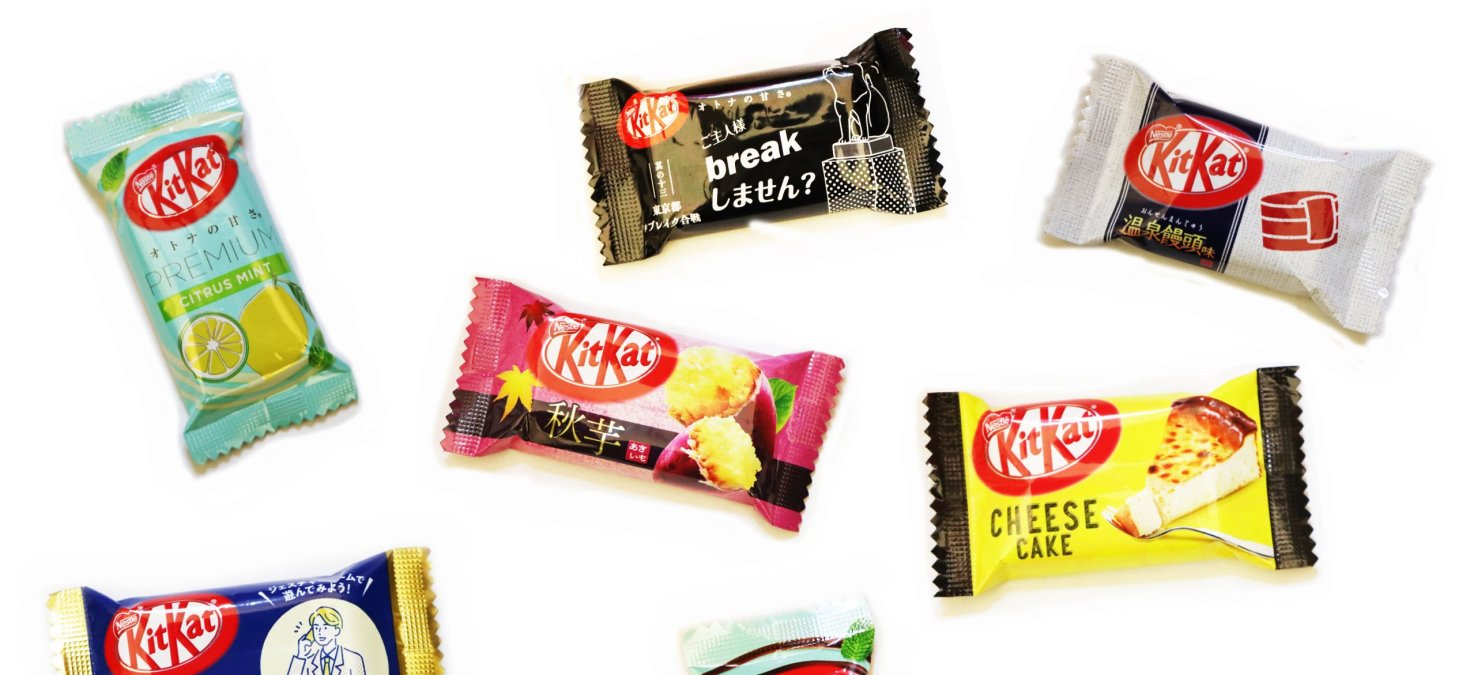Kitto Katto, A Confectionary Craze

By Peter Davis, UIUC Junior in Mechanical Engineering
When we need a break from work or studying, what better way to boost our spirits than with a delicious sweet? We all may have our favorite candies, but for students in Japan, the choice is clear: Kit-Kats! Over the past two decades, this surprising choice remains one of the top selling candies in Japan. These confections are more than just a snack in Japan, they are a cultural phenomenon!
This surprising popularity comes in part from the Japanese name for Kit-Kats: kitto kato (キットカット). This name closely resembles the phrase kitto katsutoo (きっと勝つとぉ), meaning ‘you shall surely win’. In Japanese, kitto mean ‘surely’ or ‘certainly’ and katsu means ‘to win’. For this reason, Kit-Kats are given to students not just as treats, but as good luck charms before important exams. In fact, one in three students in Japan will buy a Kit-Kat in anticipation of entrance examinations! Marketing in Japan has also played on this fact, and Kit-Kats have been sold with encouraging messages for students like “Do your best” and “It’ll be fine”. Still, this serendipitous name is only the beginning for Kit-Kats in Japan.
Perhaps the most distinctive feature of Kit-Kats in Japan is their extreme variety of flavors. While we typically only see the standard milk chocolate flavor in the United States, Japanese customers have seen over 400 unique flavors of Kit-Kats over the past 20 years! While most tastes are based on fruits, beverages, or desserts, there have been a fair share of adventurous flavors. Some bold flavors have included cough drop, baked potato, and miso soup. This variety is made possible by a rotational system where new Kit-Kat flavors are temporarily introduced every few months. However, there are also 6 permanent flavors (chocolate, dark chocolate, green tea, strong green tea, roasted green tea, and raspberry) available year-round. Seasonal flavors also make yearly appearances, such as sakura, which is available in the Spring when cherry blossoms bloom. There are even regional flavors specific to certain towns and prefectures. For instance, the purple sweet potato flavor (beni-imo) pays homage to Okinawa where they are grown. These regional flavors play into the Japan’s practice of omiyage, where travelers often bring home local gifts for friends and family.
New flavors in Japan were first introduced in the early 2000’s, but the Kit-Kat craze is far from over. In 2018, a Kit-Kat store in Osaka even began allowing customers to order custom Kat-Kats and have them made before their eyes. The store features 5 flavors and 9 toppings, similar to American frozen yogurt bars in style. As recently as 2020, a new location in Tokyo allows customers to create their own Kit-Kats. Guests pay 2000 yen, and can select one of 3 chocolate types, and use up to 17 toppings. After forming their Kit-Kat in a mold, they eagerly await for 70 minutes as it chills.
This immense popularity of unique flavors in Japan has led to some new Kit-Kats in the Americas as well. In 2019, a ‘Kit-Kat Chocolatory’ opened in Toronto, introducing a line of ‘Canadian Edition’ flavors and customizable luxury Kats-Kats. In the US, a ‘raspberry and crème’ flavor appeared for Valentine’s Day in 2020, and more common flavors including matcha and mint are frequently available. Yet for those who crave more experimental flavors, the only option is to import flavors from Japan.
So please, grab yourself a Kit-Kat and remember that no matter what this year throws at you - kitto katsutoo – you will surely win!